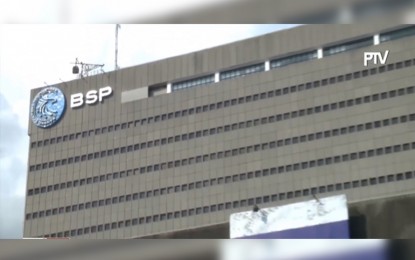
MANILA – Economists are divided on whether the Bangko Sentral ng Pilipinas (BSP) would follow or not the emergency rate cut of the Federal Reserve to counter the economic impact of the coronavirus disease 2019 (Covid-19).
In a reply to an e-mail from the Philippine News Agency (PNA) on Thursday, BDO chief strategist Jonathan Ravelas said he discounts any rate cut before the March 19 rate setting meet of the policy-making Monetary Board (MB).
“But it will be cut by 25 (basis points) on the 19th,” Ravelas said.
If the MB cuts key policy rates this month, it would be the second for the year after the same level of reduction during the MB’s rate setting meet last February 6, which was made as monetary officials continue to see within-target inflation rate and firm domestic growth.
Union Bank of the Philippines (UnionBank) chief economist Carlo Asuncion does not see any “urgent reason for the BSP to cut rates out of the usual meeting/s”, citing that “BSP Governor (Benjamin Diokno) recently intimated that there will be no off-cycle cuts.”
Asuncion said his outlook was made as the government reported two new confirmed Covid-19 cases.
Several international economic research firms have cut their growth outlook for the Philippines this year due to the impact of the disease, which has affected several countries, not only in Asia but also in Europe, the Middle East, and the United States.
A global recession is also being considered due to the impact of Covid-19 on global trade.
Asuncion said expectation for weaker economic output due to the epidemic’s impact is the reason against any emergency rate cut by the central bank “if people do not feel secure with current healthcare systems.”
“Demand decline is partly because of aversion behavior. People are afraid to go out, move, and consume. If the signal is toward making sure that our healthcare systems are ready and prepared, then, it’s probably addressing half of the situation,” he said.
Asuncion said he is on the same boat as Diokno on the need for fiscal measures to address the situation.
“I am really for a careful coordination of both monetary and fiscal tools in addressing a health emergency such as this,” he said.
Asuncion also saw the need for the immediate approval of a supplemental budget for the Department of Health (DOH), citing “the huge enemy is aversion behavior that affects economic activity as a whole.”
“If people can’t move around freely because of fear of getting infected, we’re in a very critical situation. If the supplemental budget is approved and other targeted fiscal support are forwarded, then the perception can be easily managed and damage to the country can be mitigated,” he said, citing the measures implemented by the Singaporean government.
Meanwhile, RCBC chief economist Michael Ricafort said he is open to the possibility of emergency policy rate and reserve requirement ratio (RRR) cuts before the MB’s second-rate setting meet for the year or on March 19.
He said the Fed’s decision to cut by 50 basis points the Fed funds rate to a range between 1 percent and 1.25 percent “effectively provides greater leeway/flexibility on other central banks worldwide.”
Ricafort projected Philippine monetary officials to slash the BSP’s key rates by another 25 basis points “as early as March 2020.”
He said “any rate cut (is) possible even earlier than (the) March 19, 2020 rate-setting meeting, in view of the emergency/out-of-schedule nature of the 0.50-Fed rate cut that signal the urgency to deploy easing/stimulus measures), in view of the resulting wider interest rate differential in favor of the peso.”
An RRR cut is also possible this month as this may act as a stimulus measure to boost peso liquidity into the banking system/financial system, Ricafort said.
“Thereby lowering the cost of financing while increasing the amount of peso funds that banks may lend to consumers, businesses, government, and other institutions, leading to increased economic activities and faster GDP growth,” he added.
Expectations for the key rate and RRR cuts this month are expected to help buoy the local bourse and the peso, Ricafort said, adding that the local currency is among the strongest units in the region in the past two years until the risk posed by Covid-19.
He said concerted efforts by governments around the globe are seen to lower financing cost, encourage more borrowings, and increase sales, as well as net income of companies.
These measures, Ricafort said, result in an immediate alleviation of sentiments and promote “greater confidence and stability in the global financial markets, including and most especially riskier asset classes, such as the global/local stock markets, as a countermeasure to any adverse effects of the coronavirus concerns that could further reduce/aggravate global economic growth and global trade, on top of the preexisting adverse effects of the lingering US-China trade war over the past year or so.” (PNA)
